Aechmophorus-occidentalis
Order: Podicipediformes
Family: Podicipedidae
Genus: Aechmophorous
Species: A. occidentalis
When identifying western grebes, its helpful to know what the “look alike” bird is, and how to tell them apart. The Clark’s Grebe looks almost identical to a western grebe, but the coloration of the plumage on the head is the only way to differentiate them. A Clark’s grebe has black feathers on the top of its head and white feathers around its eyes. While a Western grebe has black feathers on the top of its head but has black feathers around its eyes.
On the left is a Clark’s grebe, and on the right is a Western grebe
[https://ornithologi.com/tag/wetlands/]
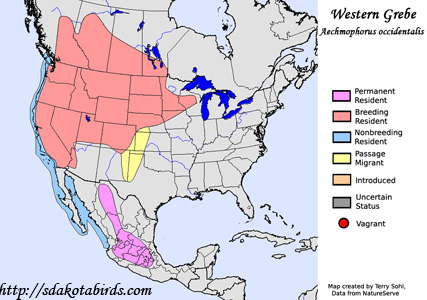
Lakes, sloughs; in winter, bays, ocean. Summers mainly on fresh water lakes with large areas of both open water and marsh vegetation; rarely on tidal marshes. Winters mainly on sheltered bays or estuaries on coast, also on large fresh water lakes, rarely on rivers.
Mostly fish year round, also known to eat crustaceans, insects, polychaete worms, salamanders. Like other grebes, also eats feathers.

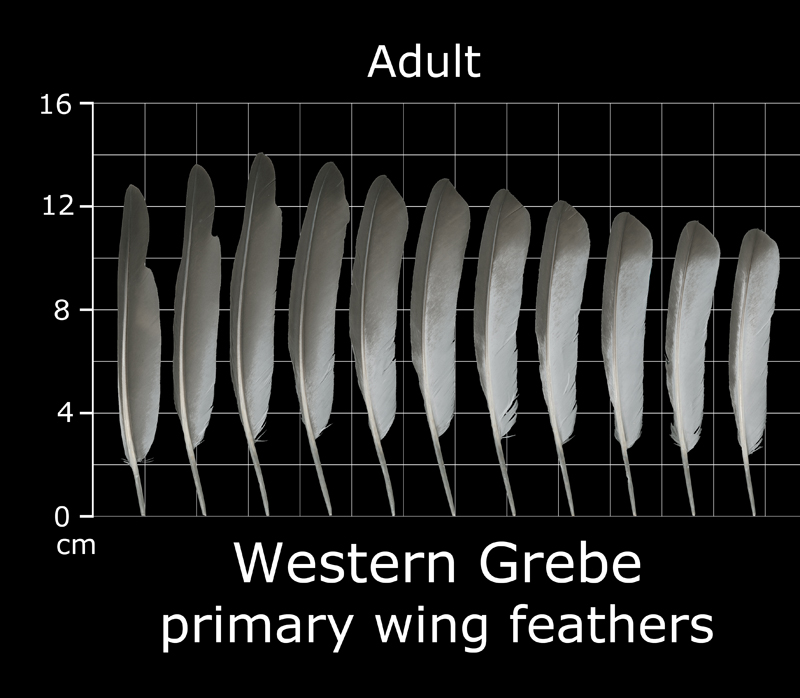
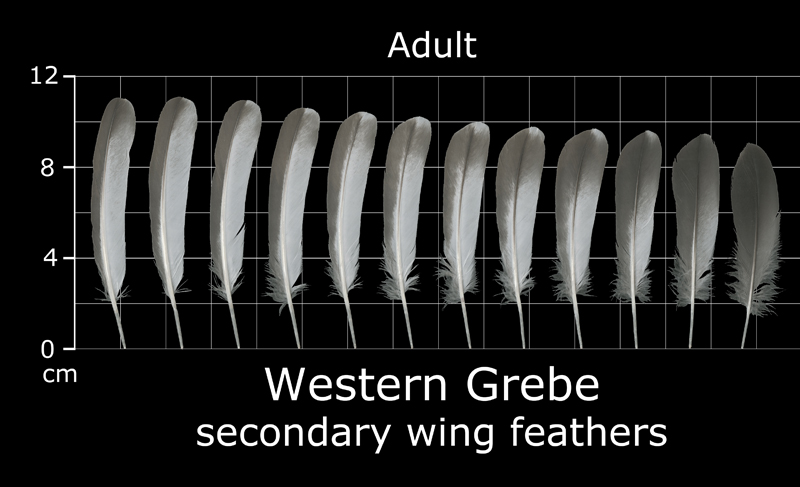 Copyright © 2010 U.S. Fish and Wildlife Service ForensicsLab. FEATHER SCAN DATA (PRIMARY WING FEATHERS FEATHER SCAN DATA (SECONDARY WING FEATHERS)
Copyright © 2010 U.S. Fish and Wildlife Service ForensicsLab. FEATHER SCAN DATA (PRIMARY WING FEATHERS FEATHER SCAN DATA (SECONDARY WING FEATHERS)Western Grebes are diurnal, meaning they are awake periodically in the daytime and at night. Depending on the season, the time they spend awake in daytime / night time will vary. During breeding season they have been known to breed at night. However they migrate during the day.
Western Grebes are highly gregarious at all seasons, nesting in colonies and wintering in flocks. Western grebes forage by diving from the surface and swim underwater propelled by their feet. Western and Clark’s are only grebes having a structure in neck that allows rapid spear-like thrusting of head; may be useful in spearing fish, but use of this behavior is not well known.
Western Grebes have their legs positioned very far back on the body, and are not well suited for walking on land. This means that their nests have to be close to the shore where they can reach their young from the water or the edge of the bank.
If you watch a flock of Western grebes for long enough, they will exhibit a unique behavior. They will run on the surface of the water with their wings back. Usually this behavior is displayed during the breeding season to find a mate. But this behavior can be seen outside of breeding as well, in order to strengthen a pair bond with an existing partner. Western grebes are monogamous meaning they will spend the duration of their lives with a single mate.
Western Grebes Running On Water
Their webbed feet and the position of their legs on their body is what allows them to achieve this feat. With their legs being positioned very far back on the body, that keeps their center of gravity above their feet when running.
Populations are fluctuating depending on region and exposure to anthropocentric effects. However some breeding locations remain stable and unchanged.
Oil spills have been and continue to be the main threat to western grebe populations. Specifically to western grebes’ wintering grounds off the Pacific coast. depending on the size of the spill, these incidents usually kill thousands of birds that winter off the Pacific coast. Western and Clark’s grebes are usually the most frequent victims of species affected along the California coast. Its estimated that over 8,000 western grebes have died from the effects of oil spills off the Pacific coast in the last 20 years. The main detriment to birds cause by oil spills can be attributed by oil ingestion, poisoning, and fouling up plumage that ultimately leads to the loss of movement and thermo-regulatory abilities.
Sauer, J. R., D. K. Niven, J. E. Hines, D. J. Ziolkowski, Jr, K. L. Pardieck, J. E. Fallon, and W. A. Link. 2017. The North American Breeding Bird Survey, Results and Analysis 1966 – 2015. Version 2.07.2017 USGS Patuxent Wildlife Research Center, Laurel, MD https://www.mbr-pwrc.usgs.gov/bbs/
My name is Greg Baumsteiger, i’m a Senior at The Evergreen State College (TESC). I’m going for a Bachelors in Science with an emphasis in Ecology, and am currently taking the program “Birds Inside and Out” (Winter 2019)
- Weems, R., & Robison, K. (2008). California’s western and Clark’s grebes are Under Pressure. Outdoor California, 69(5), 20.
- Erickson, M. E., Found-Jackson, C., & Boyce, M. S. (2017). Habitat associations with counts of declining Western Grebes in Alberta, Canada. Avian Conservation & Ecology, 12(1), 253–263
- Wilson, S., Anderson, E. M., Wilson, A. S. G., Bertram, D. F., & Arcese, P. (2013). Citizen Science Reveals an Extensive Shift in the Winter Distribution of Migratory Western Grebes. PLoS ONE, 8(6), 1–8.
- Hayes, F. E., Turner, D. G., Zimmerly, N. D., & Peralta, M. B. (2018). Nocturnal courtship, copulation, and egg-laying in the western grebe ( Aechmophorus occidentalis) and Clark’s grebe ( Aechmophorus clarkii). Journal of Ethology, 36(1), 65–75.
- Stout, B., & Cooke, F. (2003). Timing and Location of Wing Molt in Horned, Red-Necked and Western Grebes in North America. Waterbirds: The International Journal of Waterbird Biology, 26(1), 88-93.
- Duerr, R. S., & Klasing, K. C. (2017). Effects of Added Lipids on Digestibility and Nitrogen Balance in Oiled Common Murres ( Uria aalge) and Western Grebes ( Aechmophorus occidentalis) Fed Four Formulations of a Critical Care Diet. Journal of Avian Medicine & Surgery, 31(2), 132–141.
- Newbrey, J., Paszkowski, C., & Gingras, B. (2012). Trophic relationships of two species of grebe on a prairie lake based on stable isotope analysis. Hydrobiologia, 697(1), 73–84.
- KONTER, A. (2012). Visual Assessment of Interbreeding by Aechmophorus Grebes. Wilson Journal of Ornithology, 124(4), 713–720.
- KONTER, A. (2011). Interbreeding of Aechmophorus Grebes. Wilson Journal of Ornithology, 123(1), 132–136.
- Biomechanics: How grebes walk on water. (2015). Nature, 520(7549), 588.
- Allen, J., Nuechterlein, G., & Buitron, D. (2008). Weathering the Storm: How Wind and Waves Impact Western Grebe Nest Placement and Success. Waterbirds: The International Journal of Waterbird Biology, 31(3), 402-410.
- Humple, D., Nevins, H., & Henkel, L. (2013). Revisiting Winter Wing Molt in Western Grebes (Aechmophorus occidentalis) and Clark’s Grebes (A. clarkii). Waterbirds: The International Journal of Waterbird Biology, 36(4), 426-431.
- Gaydos, J., Massey, J., Mulcahy, D., Gaskins, L., Nysewander, D., Evenson, J., . . . Ziccardi, M. (2011). SHORT-TERM SURVIVAL AND EFFECTS OF TRANSMITTER IMPLANTATION INTO WESTERN GREBES USING A MODIFIED SURGICAL PROCEDURE. Journal of Zoo and Wildlife Medicine, 42(3), 414-425.
- Nuechterlein, G., & Buitron, D. (2006). Advertising by Western Grebes: Bout-Length Variability and Signal Confusion in a Multiple-Use Call. Behaviour, 143(12), 1547-1562.
- Vilina, Y., & Cofre, H. (2000). “El Niño” Effects on the Abundance and Habitat Association Patterns of Four Grebes Species in Chilean Wetlands. Waterbirds: The International Journal of Waterbird Biology, 23(1), 95-101.
- Sauer, J. R., D. K. Niven, J. E. Hines, D. J. Ziolkowski, Jr, K. L. Pardieck, J. E. Fallon, and W. A. Link. 2017. The North American Breeding Bird Survey, Results and Analysis 1966 – 2015. Version 2.07.2017 USGS Patuxent Wildlife Research Center, Laurel, MD https://www.mbr-pwrc.usgs.gov/bbs/
- https://www.audubon.org/field-guide/bird/western-grebe


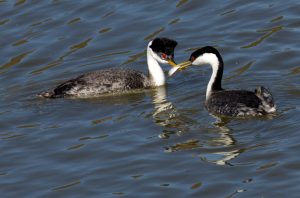

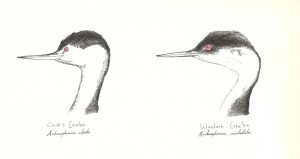
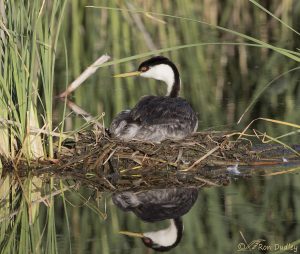
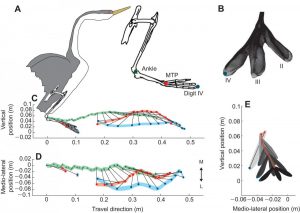

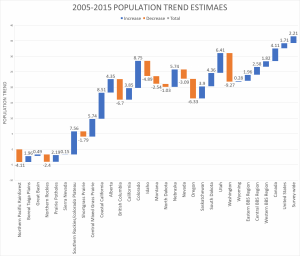








Leave a Reply